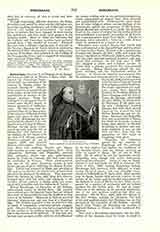

Zucchetto (zucca, head), the small, round skull-cap of the ecclesiastic. The official name is pileolus; other designations are: berettino, calotte, subbiretum (because worn under the biretta), submitrale (because worn under the mitre), soli-deo. The pope’s zucchetto is white, that of the cardinals red, even when the cardinal is a member of an order. Cardinals who had been secular priests received the red zucchetto and also the red biretta in 1464 from Paul II; the cardinals taken from the regulars were granted both in 1591. If the newly-appointed cardinal is at Rome he receives the zucchetto from the Sottoguardaroba as he leaves the throne room where he has received the mozetta and biretta from the pope; otherwise the zucchetto is brought to him, along with the decree of appointment, by one of the pope’s Noble Guard. The pileolus of the bishops is violet, that of other ecclesiastics, including the prelates, unless a special privilege to wear violet is granted, black. Bishops and cardinals wear it at Mass, except during the Canon; other ecclesiastics may not wear it at Mass without special papal permission. However, according to a decision of the Sacred Congregation of Rites (September 23, 1837), a bishop also may not wear it while giving Benediction. It cannot be said positively when the zucchetto became customary, but it was probably not before the thirteenth century. It appears on the cardinals in the fresco, “Rt. Francis before Honorius III”, painted about 1290 in the upper church of St. Francis at Assisi. It is seen also under the tiara in the effigy on the tomb of Clement VI (d. 1352) at La Chaise-Dieu. The figures on several tombs of bishops of the fifteenth century in the Roman churches show the zucchetto under the mitre. In the “Ordo” of Jacobus Gajetanus (about 1311) the zucchetto is mentioned in connection with the hat of the cardinals (cap. cxviii), and with the mitre in the “Ordo” of Petrus Amelii (cap. cxliv.), which appeared about 1400. It is shown in the pictures and sculpture of the late Middle Ages sometimes as a round skull-cap, sometimes as a cap that covers the back of the head and the ears. In this shape it was called camauro; this designation was given especially to the red velvet cap of this kind bordered with ermine that was peculiar to the pope. There was great confusion as to the proper use of the zucchetto, and hence the Sacred Congregation of Rites has delivered several decisions on the subject (“Deer. auth. Congr. SS. Rit.”, V, Rome, 1901, 382).
JOSEPH BRAUN

